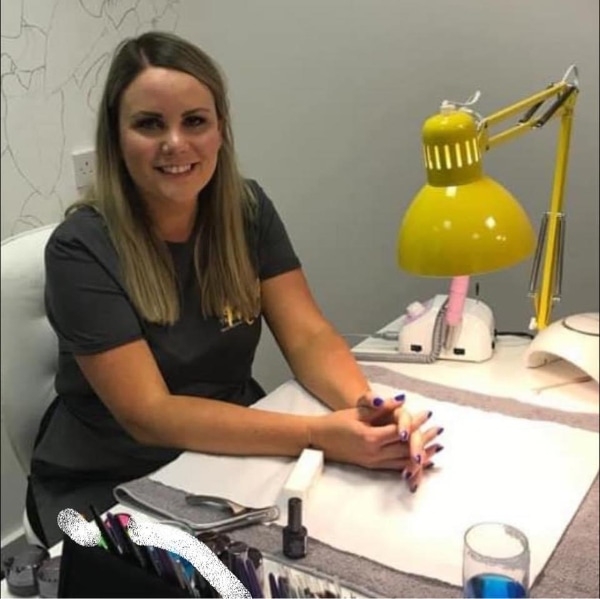Are you keen to share your knowledge and become a nail industry educator?
Scratch gathers top tips and hears from pros who have moved from salon tech to teacher…
Exceptional education is key to shaping the future of our industry and ensuring high standards and safe practices. If you’ve been in the nail industry for some time, taking the step from working daily with clients to teaching may be exciting. However, the transition isn’t a quick one, and it’s important to be well-informed of your options.
Suitability

“Just because someone is a fantastic nail technician, competitor, or winner of an award doesn’t mean that they should or can teach,” says Katie Clark, creator of Katie Barnes Tool Range and Scratch Stars Services to the Nail Industry nominee 2023. Teaching is about showing someone how to do a method, not about showing them how to do it yourself.
The creator of the education portal Nabuno and a veteran of the nail industry, Sue Davies, advises aspiring educators to ensure that their training is current and that they fully comprehend the material they will be teaching. “Basic question answers should not require an educator to look them up.”
Pathways
Katie Clark shares the various industry education routes and the pros and cons of each:
1. Educate for a brand.
This is the ideal place for you to begin your teaching career. You must have a thorough understanding of and enthusiasm for the brand. Because of the association, you have excellent assistance and the course materials are customized for you. You are bound to the brand and its methods of instruction, which is a drawback.
2. Gain accreditation to teach private courses.
It is simple to overlook how much effort and time it takes to become accredited on your own, particularly if you want to do it correctly.
In addition to writing lesson plans, certifications, exams, and exhaustive and complete guides, you also need to generate the course material. Getting this proofread is crucial. You will get guidance on the accrediting body’s preferences and criteria when this is submitted to them for approval. This procedure can take up to six weeks and involves both time and money.
Writing the guides takes months because of the amount of study and precision that must be done. After you have produced your handbook, you must keep it updated with new information on goods, procedures, and laws as the business evolves. After that, these modifications need to be reaccredited. When I initially started, I published the most widely read starting instructions on manicures and pedicures and beginner gel paint. As I got more knowledge, I included other topics like nail art and L&P acrylic. As soon as you decide to pursue education, do not feel pressured to teach everything right away since you will always be learning new things. As your experience increases, work your way up to larger, more sophisticated classes by starting with the fundamentals and keeping the size of the classes modest.

Teaching independently allows you to impart knowledge in whatever way you see fit. But since it’s doubtful that you’ll have the confidence or expertise to effectively utilize this strategy, I wouldn’t suggest this to someone who is just starting out as a teacher.
The NHBF member-only handbook, “Becoming a Training Provider,” has information on registering, writing a business plan, and applying for financing. You may download the handbook at www.nhbf.co.uk.
3. Purchase courses through an accreditation board.
You can buy pre-written course materials from an accrediting authority like The Guild and fulfill the requirements if you want to work as an independent educator but don’t feel comfortable creating your manual. You could make a fantastic teaching career out of this.
4. Work in a college.
At your neighborhood college, you can apply to work as a tutor. Filling up an application and going to an interview are required for this. With the facility’s and award bodies’ cooperation, you will instruct using the given course structure.
Accreditation

“Get independent approval or endorsement of your training from a recognized awarding organization accredited by one of the UK regulatory bodies (Ofqual, the Scottish Qualifications Authority, Qualifications Wales, or CCEA in Northern Ireland) if you want to establish credibility and a positive reputation as a training provider, advises Caroline Larissey, chief executive of the National Hair & Beauty Federation (NHBF). The following certifying bodies provide credentials in hair and beauty: City & Guilds, VTCT, CIBTAC, or TQUK. Examine your alternatives carefully because prices and what’s offered might change.
The process

The Level 3 Award in Training & Education (AET), an Ofqual-recognized teaching course, is what I suggest you enroll in, says Louella Belle educator Michelle Brookes, a finalist for 2023 and 2022 Scratch Stars Educator of the Year. These courses are provided by several nearby further education institutions, private Ofqual schools, and online training companies.
The Level 3 Assessment and Quality Assurance qualification (City & Guilds) is required if you intend to instruct Ofqual accredited training courses. This will enable you to formally evaluate the work that your academy students have produced. I advise you to upskill and acquire this additional expertise even if you are teaching certified courses. All courses have to include assessment as a regular practice, and it is quite advantageous to have the knowledge and abilities to carry this out. After finishing

